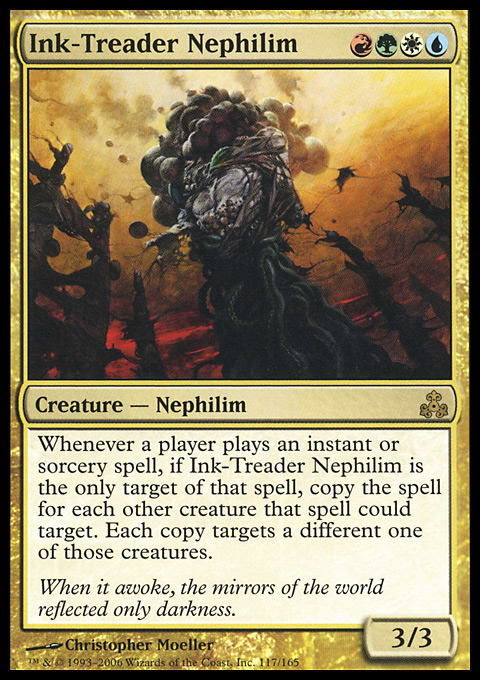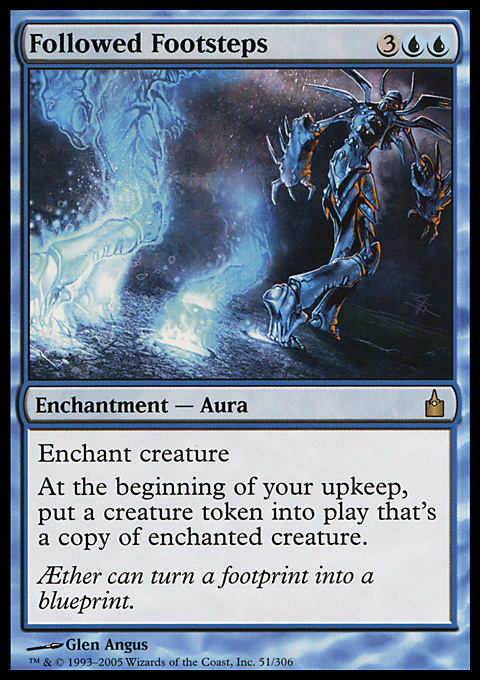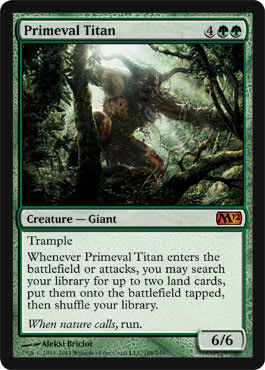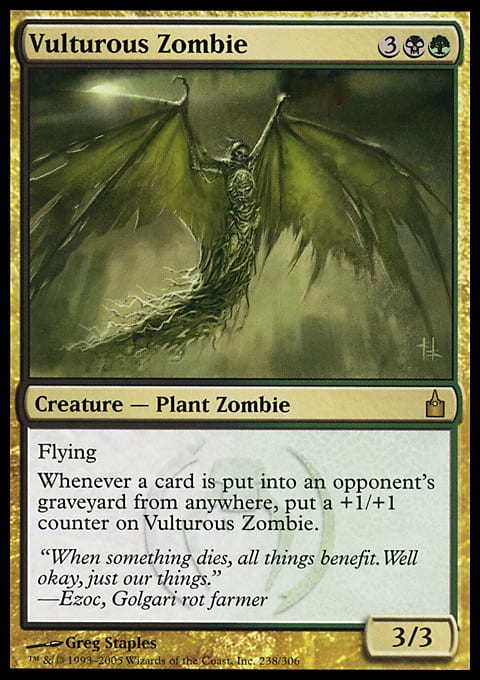Return to Ravnica is looking like an amazing set. Most of the cards have given me that wow-I-don’t-believe-they-printed-that feeling, which is always a good sign with a new set. I’d love to pick through a few of my favorites, but I’ll hold off until the entire set has officially spoiled. I’d hate to talk about one card only to see another one the next day that completely changes my opinion or to find out the spoiled card isn’t totally accurate. Check back next week.
This week, I thought we could return to Ravnica (small-“r” return) block and look at a few of the cards there that were good to me—or good to those around me! Ravnica is a big plane, and it is unlikely you ended up going down all of the same back alleys I did. I’ve tried to avoid some of the more obvious cards (looking at you, Doubling Season), so if you don’t see your favorite, either it did not explode in my playgroup, I thought it was too obvious, or I just straight-up forgot. Feel free to add your stories in the replies below.
A quick note: As I was putting the finishing touches on my article, Abe Sargent’s article came out, doing much the same thing as mine. I guess great minds think alike! If you haven’t already, check out his article for other great cards from the original Ravnica block.
Blazing Archon
I hate this card. This guy continues to blight my playgroup. When he shows up, you can be sure that he will be shrouded or hexproofed shortly. When I first saw this card, I expected to see some decks try to use him as a way to avoid holding any blockers back. Multiplayer combat is constantly fraught with the limitation that you want to ensure that you can stop everyone from attacking you. This usually forces players to set up a significant wall of creatures and spells, constantly on the ready to repel opponents before they even consider attacking with other creatures.
When I saw this, I expected that players would be able to use all those creatures that had been held back to block as an invading horde, knowing that as long as the Blazing Archon stayed in play, creature combat was not a worry for them. My ability to predict my playgroup was not very good.
The first time I saw the Archon in play in our group, he was the insurance in a combo deck. The deck was a little slow to combo out, so the Archon was there to protect the player against combat damage while he assembled the combo. At 9 mana, this meant a ton of mana-ramping and rituals to put the Archon into play in a reasonable period of time. Once he hit play, nothing would happen for several turns, while the player slowly attempted to put together the combo. This was annoying, but the combo was very slow to come together, and when someone is actually hard-casting Blazing Archon, it is pretty hard to call foul when that person gets the win. If you can’t stop someone from hard-casting a 9-mana creature that is only part of a win condition, you probably deserve to lose.
The next time I saw the Archon was in a reanimator deck. This was completely miserable. Archons on turn two and three! Even after you kill it, he would find another one, and you were stuck again. It took weeks to convince some people that attacking other players was the worst thing you could do. It was only helping the Blazing Archon player! Just miserable.
Ink-Treader Nephilim
My friend John has an Ink-Treader Nephilim deck that he is constantly changing, switching out one targeted spell for another. I wrote an article just over a year ago about his Nephilim deck and all the insanity that ensues when it hits the board. John has already used many of the spells you would think of using; Lightning Bolt, Terror, and Threaten have all been used to great effect in a variety of games. My personal favorite of the cards used so far is Panic. John isn’t using this as a way to open the door to let his creatures attack. In fact, John often uses the card on other players’ turns. John simply wants to draw the cards. For
While this is a great move, it paled in comparison to the truly epic play John made that I described in the article:
Celestial Ancient
Celestial Ancient is obviously not a very good card. The ability puts the card to the fringes—in weird decks that just don’t seem to work. I ended up opening three of these guys in the packs I opened at the time, so I was determined to figure out how to make him work!
Long before Ravnica block, I had a G/W deck that just seemed to be missing something. The deck would either take out a single opponent or do nothing for most of the game right until the end, when it would suddenly go off and win the game. The deck used Auratog and Rancor. It was straightforward enough: With an Auratog in play, cast the Rancor, then sacrifice the Rancor to give the Auratog the +2/+2 bonus. The Rancor hits the graveyard and goes back to your hand, ready to be cast again. The Auratog would become huge, then get the trample from Rancor and run people over. Unfortunately, the defense in the deck was pretty weak, so you rarely managed to take out more than one person. Celestial Ancient changed that.
Not only did the Auratog become bigger, but it stayed really big on my opponents’ turns. The Celestial Ancient and the handful of mana creatures in the deck all became huge with all the +1/+1 counters the Ancient would give out when Rancor was being cast repeatedly. The extra firepower pushed the deck among the top decks in my playgroup at the time. Celestial Ancient made things interesting.
Spawnbroker
This is the creature that I wanted to do so much more, but it just never seemed to make it happen. I thought it would work in decks in which I could pump my creature and trade it with something that would always be huge. That didn’t seem to work. I thought it would work in decks in which I had a way to take my creature back after trading it, but that never seemed to work either.
I know this card can work, but it just never seemed to get the job done in my decks. Any suggestions from the readers for how to make this work in multiplayer games would be greatly appreciated.
Ghostway
Much like Celestial Ancient, Ghostway seemed like a one-trick pony. The joy in casual is that if you do your trick well, you’ll probably see plenty of action. Ghostway is an all-star in its niche.
My Allies deck did not run Ghostway. I hadn’t seen the card and had long forgotten that it existed. What I did have was Cauldron of Souls. I would put a bunch of Allies out and play some mass-destruction spell to wipe out the board. I would give all my Allies persist with the Cauldron and watch them all come back into play, giving me Allies loaded with +1/+1 counters, life, and a bevy of other benefits.
When I read The Stybs’s article about his Ally deck, I discovered the joy of Ghostway. Using Ghostway requires far less mana. Cauldron of Souls sits on the battlefield, waiting to be destroyed at your opponent’s leisure. Most importantly to me was the surprise factor Ghostway offered. When Cauldron of Souls was sitting there, everyone knew what was going to happen if they used their mass removal, so I’d be forced to use my own. With Ghostway, others will cast their Day of Judgment and save me the trouble! In those situations, I have less control and a little more difficulty optimizing when the effect hits, but the benefits outweigh the negatives. The hoops are so much easier to jump through. I am sold and haven’t gone back.
Cytoplast Manipulator
I am a more recent convert to this card, but as each new set comes out, I love this card more and more. So many creature abilities involve giving a creature a +1/+1 counter! Persist and undying are two of my favorites! When I first started playing it, I made sure to run cards that could give the counters to my opponents’ creatures. I often now don’t bother—someone on the board usually has +1/+1 counters piling up on a creature I’d love to take. With Return to Ravnica, we have unleash and scavenge as abilities that will continue to pile up the counters needed to steal away opposing creatures. With the Cytoplast Manipulator, you have a reason to scavenge your creature to put +1/+1 counters on target creatures your opponents control. Slitherhead just becomes better and better!
I initially ran this card as a throw-in with a Simic deck that ran Seedborn Muse and Dragon Blood. While perhaps not the most elegant or efficient pairing, it allowed me to control most of the creatures on the board that I could target. Eventually, I just started throwing the Manipulator in any blue deck and letting my opponents do the work for me!
Followed Footsteps
I figured no one had heard of this card, and then Noel deCordova mentioned it in his article this week! Geez!
Let’s start with the obvious here: This is not a good card.
- It is a 5-mana Aura.
- It does nothing until your next turn.
- It requires you to target a creature.
- It dies to pretty much everything.
If you choose to play this card, you are probably thinking of many copies of a creature you already control and how awesome it would be to have several of them. Multiple copies of Primeval Titan does sound pretty good, doesn’t it? The problem, though, relates to everything I’ve already mentioned above. Your opponents were already considering killing the Titan, and now you’ve given them another reason. To effectively use this, you want to use it on your creatures with hexproof. It is slow and clunky, but at least it is less likely to die immediately. Populate allows you to take advantage of Followed Footsteps a little faster as well. No promises, but populate improves Followed Footsteps at least a little bit!
A better option is to use it on your opponents’ creatures, preferably the ones you want to see dead. Consider this example: You are playing with Allan, Barry, and Colin. How convenient of you to have friends A, B, and C. Allan has a Primeval Titan that you can’t kill, but so far, no one else has tried to kill it either. You play Followed Footsteps on it, and things become interesting. Barry and Colin are now going to be forced to deal with a new Primetime at the start of each of your turns unless they do something about Allan’s Titan. While Allan has an unnatural love of Primeval Titan, the idea of you making copies of it frightens him enough that even he considers killing it. And you get to have a new Titan every turn, which you can use to regularly stuff Allan’s attacks or start attacking back.
The third and most effective option is to attach it to a creature that most people don’t particularly care about. Multiple copies of Birds of Paradise is a wonderful thing! It always amazes me how many players will let you gather more and more mana!
My personal favorite target so far was Acidic Slime. I only got to make a couple of copies, but regular land destruction was very handy!
Vulturous Zombie
Remember the Cytoplast Manipulator? This Zombie is the reason I tried him out. For the Zombie to receive a counter, all that needs to happen is for a card to hit an opponent’s graveyard. Abe explained, “In multiplayer, cards hit the graveyard with alacrity.” It couldn’t be described better. Looting, forced discard, discarding as a cost, and discarding down to seven all result in a card going to the graveyard. Destroy a creature or any other permanent in play, and the Zombie receives another counter. Running a Pernicious Deed with the Zombie in play often adds more than 10 counters.
The only real deck limitation to Vulturous Zombie is the color requirement, and in multiplayer, making ![]()
![]() is not much of a limitation at all. This guy is simply a house.
is not much of a limitation at all. This guy is simply a house.
Now, if you are reading this while watching an infomercial, you are probably saying to yourself, “But Bruce, a 3/3 flyer for 5 mana that grows bigger pretty much every time I blink is great, but I think you can do better.” We’ll throw in Corpsejack Menace from Return to Ravnica! This fellow doubles the +1/+1 counters placed on your creatures. If you don’t think Vulturous Zombies is growing fast enough, we just doubled it!
Wrapping Up
I hope you have discovered some new friends or even a few ways to use some old friends. We’ll see how Ravnica has changed next week, when we take a look at a few of the new cards that look bring insanity to your kitchen table.
Bruce Richard






























